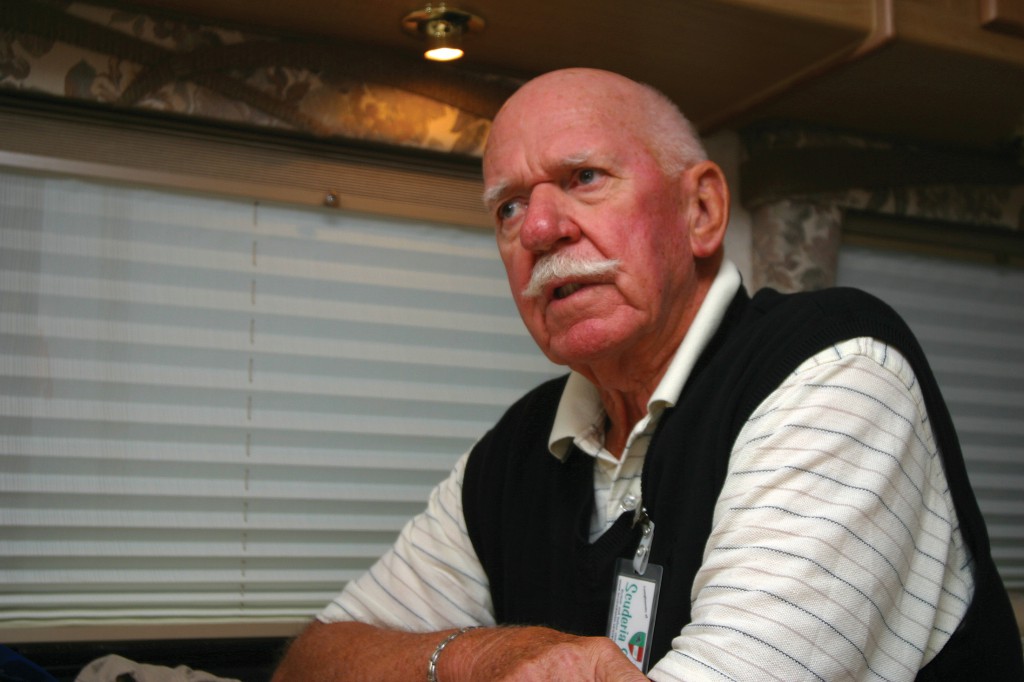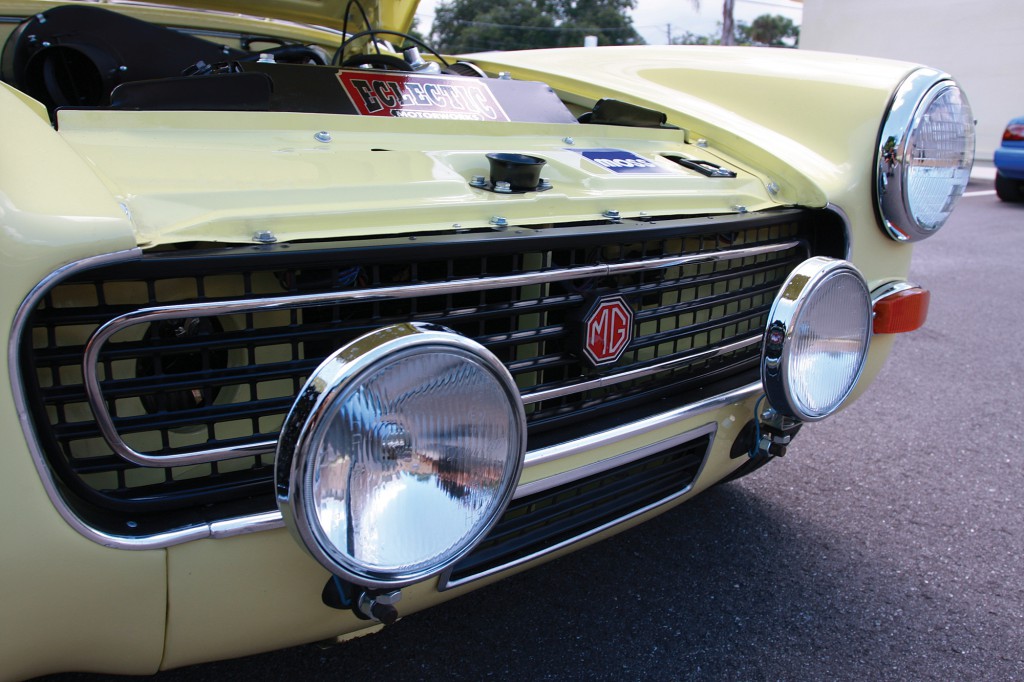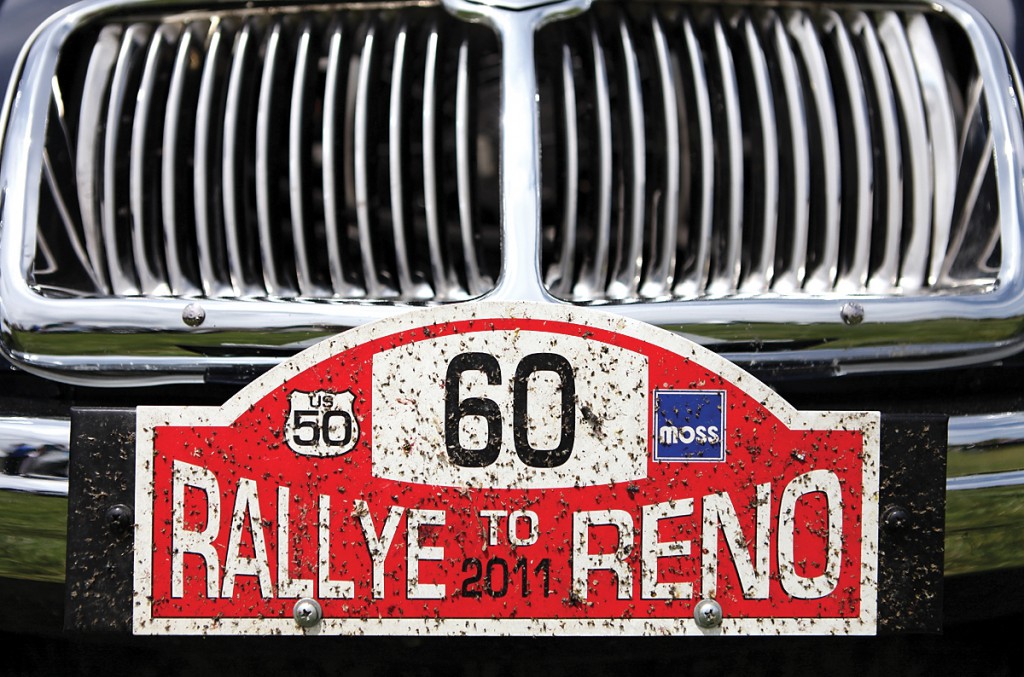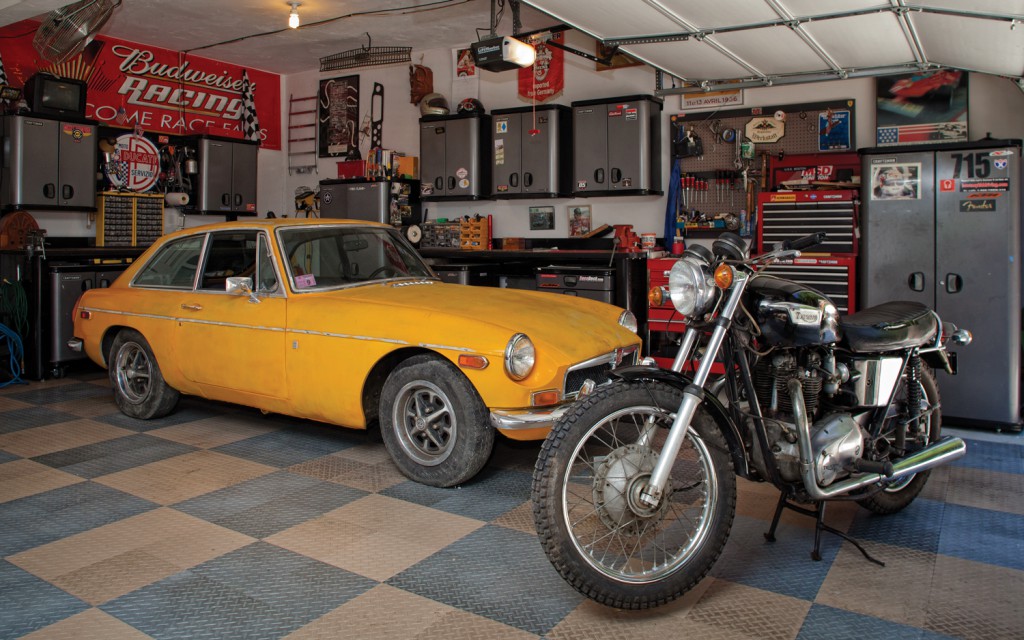Attend any Vintage Auto Racing Association (VARA) event, and you’ll see many Triumphs signed by R.W. “Kas” Kastner, an icon who is revered by British car racers, owners and enthusiasts. At 83, he’s still attending races and offering advice to guys who are having the same problems he did half a century ago on the same cars. The racers are eager to acquire his knowledge and perhaps a little racing luck from his signature/endorsement.
Kastner is humble about his legendary status, yet with his record in racing Triumphs, building and tuning race cars, leading Triumph’s competition effort, developing performance parts, and writing Triumph tech manuals and history books, the legacy sticks. He is THE MAN. (Post-Triumph, his successes continued with his race team and Nissan’s team.)
“It never occurred to me that I’d develop a career in the automotive industry,” says Kastner reflecting back on his first industry job selling parts. “But it happened quickly.” He began racing in 1952 with a new MG TD, winning his first race on the streets of Aspen, Colorado and taking second overall. “It really got me. Racing grabs you hard, and it becomes all you look forward to,” says Kastner.
While modifying a head, a piston wound up with a hole in it, and he had to learn about engine building. He did this with the tool kit that came with the car. “Pretty soon I had the fastest car around and apparently some driving ability,” says Kastner. “I went for two years without losing a race, and was quite daring and willing to do what it took to win.”
Racers started asking Kastner to tune their cars, so he opened a shop in 1953 in Salt Lake City. But the cars he fixed stayed fixed so he ran out of customers. With a wife and two kids, when he got an opportunity to move to LA to work at a British car dealership as a mechanic, he put his MG Special on a tow hitch behind his 1950 Studebaker Champion and headed west. Soon he was the dealership’s service manager.
Racing Wins for Kas
In 1958, Kastner accepted a position with a BMC distributorship, but before he started, got a better offer as service manager for CAL Sales, the Triumph importer for 11 Western states. He immediately got a TR3, and started racking up racing wins and respect. In 1959, he won the Class E Production Championship against racing greats like Ronnie Bucknum and Lou Spencer. Then Triumph bought CAL Sales and made a rule that no executives could race, so Kastner had to decide between a career in racing or the auto business. He quit racing.
 Kastner started making performance parts like camshafts in his garage at night and sold them directly to Triumph. Before long, he opened the company’s competition parts department.
Kastner started making performance parts like camshafts in his garage at night and sold them directly to Triumph. Before long, he opened the company’s competition parts department.
He switched his nighttime work to building three TR4 race cars for the 1963 Sebring 12 Hour race, and the team took first, second and fourth in the class. “When I went to the president of Triumph and asked to be compensated for the time I spent building the three cars, he suggested I seek greener pastures. I was livid,” explains Kastner.
So Kastner called his old friend, Carroll Shelby, who offered him a huge pay increase to run his operation. But before he could start, Triumph got back in touch and said they’d meet Shelby’s offer if he’d stay and set up a competition department, a first for any foreign manufacturer in the U.S.
“My goal was to come up with parts and modifications that would allow everyone to race. From tires to brakes to cranks, we had it all sorted out,” Kastner explains. He got so much mail with inquiries on performance upgrades that he wrote Competition Preparation Manuals on the ’60s models that are still a mainstay for racers. And he devised an innovative drivers’ assistance program.
Triumph’s Competition Success
The competition effort was a success: “In Class E Production in the ’60s, if you didn’t have a Triumph, you had no chance,” says Kastner. He was the guest of the factory team at Le Mans in 1964. “I was very hands on; I still modified every cylinder head on every car we ran. It was dirty grinding work, but there was no question it would be right,” he explains. “The endurance racing was extremely difficult and we had little to work with, but it was rewarding and had wonderful endings.”
Kastner got excellent magazine write-ups on the cars and the teams, and that added further credibility to the marque. He handled research and development for Triumph parts. He started attending high-level meetings in England, and had company chief Lord Stokes’ private number.
Kastner left Triumph at the end of 1970 after British Leyland offered him the competition director position for all the marques. “They were surprised I resigned. But I’d been in Coventry and I knew what was going on. I could see it winding down. The old stuff was really old, the cohesive engineering team was split up and the future was going to be grim,” he explains.
Kastner-Brophy Racing was soon formed with John Brophy to race Triumphs in SCCA, as well as the three Indy Car 500-mile races, Can-Am Series and Formula 5000 Series. The mid-’70s oil crisis ended that endeavor. Kastner went on to develop aftermarket turbocharger systems before they became regular options from the manufacturers.
GTP Championship Success
He joined Nissan Motor Corporation in 1986 to lead their motor sports effort, and took them to the IMSA GTP Championship in just three years. They won the Manufacturers Championship three years in a row. “I was always a good competitor, and I was good at politics. I got the money required and got it done,” he says.
“I loved GTP racing. I loved the whole atmosphere, from selecting the team and budgeting to running with the best in the world,” says Kastner. “I never turned a wrench, but the technical and mental aspects were enjoyable. There was a lot of team manager trickery you could do then.”
Kastner retired from the auto industry and racing in 1995, his wife passed away and he remarried. His second wife Peggy talked him into going to a vintage race in 1999. “I said no one would remember me or care, but when I walked in, there was a line of Triumphs and three of them were in my colors. One racer with a new paint job asked me to sign his car, and it was such a revelation. I couldn’t believe all those people were interested in something I did over 40 years ago. I didn’t realize I had any notoriety,” he explains.
He decided to write a book about his experiences, which came out in 2002. He has now written four books—three of which are available from Moss Motors—and enjoys talking to racers. He was recently invited to speak at a British car event at Nurburgring in Germany. “I still have enthusiasm,” Kastner adds.
By Kathleen M. Mangan








'Kas Kastner – The legend and the legacy' have 2 comments
March 20, 2016 @ 4:55 pm tom e
I’ve known the name for years but had no idea, thanks, I have my 52 TD
June 4, 2016 @ 1:08 pm Tom Peters
Automotive knowledge is one skill set , but his golf needs improvement!